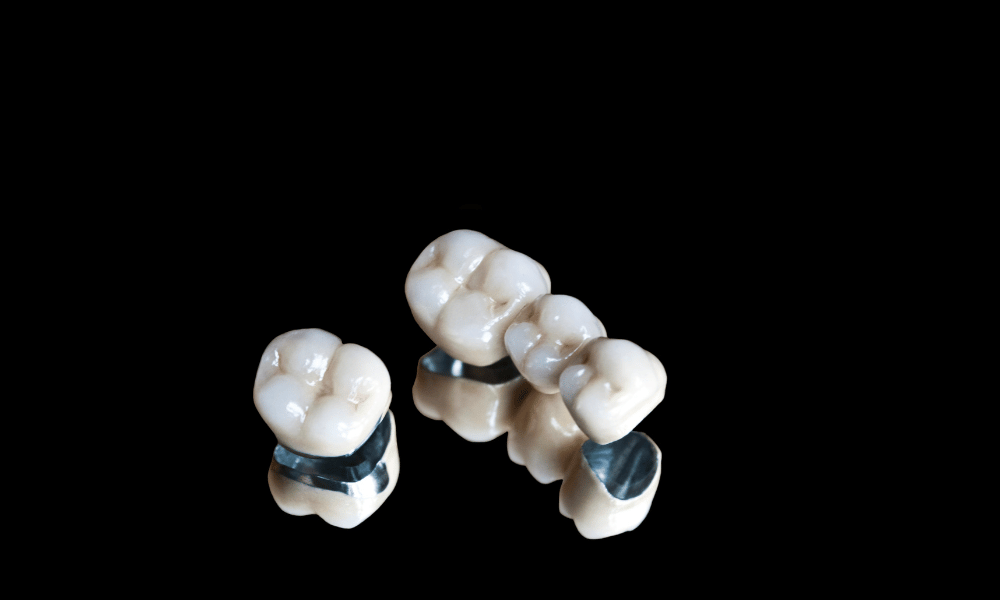March 01, 2023


Written by:
Dylan Schubert
A quality porcelain fused to metal (PFM) crown means nothing if it isn’t prepared properly. PFM crowns have long been some of the most popular options for dental restorations. These crowns provide multiple benefits, as they are reliable, highly esthetic and one of the most affordable restoration options.
Preparing these crowns properly goes a long way toward providing patients with the best and most comfortable restoration possible. With this guide, you’ll learn all you need to know about placing PFM restorations, from proper PFM crown prep dimensions to accurate shaping of the tooth structure.
Porcelain fused to metal crowns are crowns that have a metal foundation with a porcelain overlay. This construction means that they are almost as durable as fully metal crowns but also mimic the appearance of natural teeth, making PFM crowns a strong option compared to other materials.
Even with the advantages of porcelain fused to metal crowns, their durability, esthetics and comfort rely on a careful preparation process. Meticulous preparation ensures that the lab can create a natural-looking and fully functional crown while ensuring a proper fit. PFM crown prep requires reducing the tooth surfaces to the proper size and creating enough space for the restoration.
Meanwhile, improper preparation could lead to several issues. For example, a lack of clearance between the preparation and the surrounding teeth will prevent the lab from being able to use enough porcelain to create a naturally translucent restoration and hide the metal structure underneath. Altogether, a careful understanding of the preparation process makes a world of difference.
When preparing a porcelain fused to metal crown placement, the area of the tooth plays a key role in the procedure. Although the steps are similar, the approach and the PFM crown dimensions will be slightly different depending on whether you are placing a restoration on an anterior or posterior tooth.
When preparing a restoration for anterior teeth, esthetics are often the priority, with functionality following closely behind. In order to create the proper esthetics, you will need to provide additional clearance for the restoration to have translucent ceramic.
To prepare anterior teeth for PFM crown placement:
In contrast with anterior teeth, the posterior teeth are focused less on esthetics and more on strength and functionality. Although all PFM crowns should be prepared with longevity and stability in mind, durability is vital for posterior teeth. Since these teeth do most of the chewing, careful preparation is necessary. Durability is even more important for patients with bruxism.
To prepare posterior teeth for PFM crowns:
As with any process, PFM crown prep does offer some common challenges for even the most experienced dentists. Fortunately, the common challenges are easier to avoid with careful attention to detail and a proactive understanding of what to avoid.
Some of the common mistakes to be aware of before preparing a restoration include:
Although the steps for PFM crown prep are fairly universal, always expect to make adjustments on a case-by-case basis. To ensure a comfortable and long-lasting restoration, you should consider a few final points depending on your patient:
Most importantly, remember that PFM crown dimensions and guidelines can differ depending on the patient. If you have a patient that has unique needs, then inform your lab so they can make the appropriate adjustments for you. At PRO-Craft Dental Laboratory, we put special care and attention into personalizing each restoration to fit each patient comfortably.
The PFM crown prep process makes a vital difference in patient comfort and restoration, but it all starts with choosing a high-quality crown. At PRO-Craft Dental Laboratory, we are committed to providing each patient with a quality, long-lasting restoration. Every crown is made with careful attention to detail in our state-of-the-art facility for a comfortable fit and reliable functionality.
When you work with PRO-Craft, we are proud to offer not just reliable restorations but also our expertise. If you come across any issues or questions during PFM crown prep, we are happy to help provide guidance. Explore our full selection of crowns and bridges, or contact us today to learn more about how our restoration crafting process takes the stress away from your practice.
.png)
Zirconia crowns have quickly become one of the most popular materials for dental restorations. Both patients and providers appreciate zirconia crowns for their durability, strength, translucency and...
Read More
Proper tooth restorations should balance increasing the functionality and the appearance of a patient’s damaged or decayed tooth while lasting as long as possible. Two of the most common materials...
Read More.png)
Choosing the best material for dental restorations is not always so straightforward. Comparing IPS e.max crowns vs. zirconia crowns, they offer versatile, reliable, and realistic restoration options....
Read More